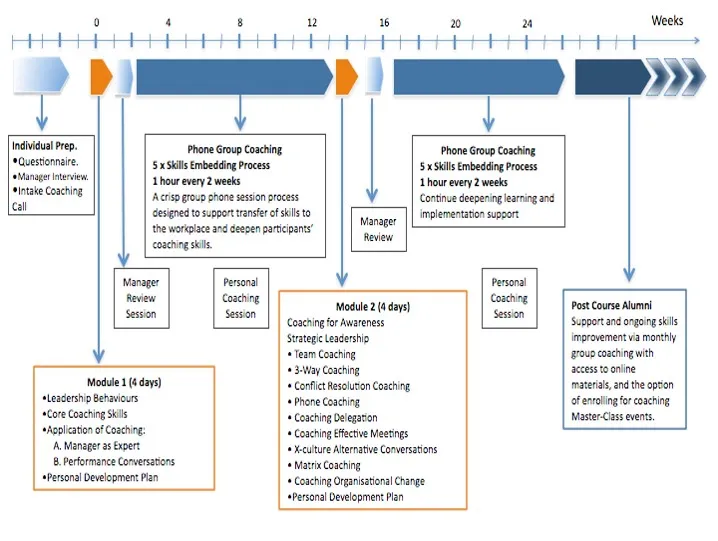

How to Develop a Leadership Pipeline
Have a structured Process to develop your Second line Leaders
Many leaders often think they have a robust leadership pipeline, for some, leadership pipeline is about identifying the Top talents and earmarking for certain positions. An example of typical old-school thinking to grow leaders, we are living in a disrupted environment, and If we don’t disrupt our way of thinking or the way of working, we will “self-destruct” like how Kodak refused to accept the digital evolution and went bankrupt. The disruption cycle has become much shorter, it is now every 3-4 years, and the same goes for leadership pipeline and development as well, what you learn now may not be relevant in future and unlearning & re-skilling is now a new norm.
Do we have a problem? Yes - Global Human Capital Trends report by Deloitte stated that 89% of executive “rated the need to strengthen, re-engineer, and improve organizational leadership" But "more than half of surveyed executives (56%) reported their companies are yet not ready to meet leadership needs.
It should be Senior management portentous preference to re-think a few levels deeper about the leadership skilling problem and ask an honest question to themselves: are we nurturing our talents to build leadership / entrepreneurial mindsets?
Great Leadership begins in the Middle, where your highest potential leaders acquire the broad range of skills they needed to succeed in more senior roles. You build the most effective leadership bench when you practice a combination of succession planning and leadership development using a comprehensive process for finding and grooming future leaders at all levels in the organization. Succession planning and leadership development are strong allies because they share a common fundamental goal: that is getting the right skills in the right place.
Developing a leadership pipeline is laborious. What are the rewards for your efforts? The right leadership skills at the Top - and all levels in the organization. Though one needs to have patience in developing leaders and succession planning however to make it easy to implement and yet practical, the management needs to do the following.
Have a Structure:
Create a formal structure at all critical levels to support development through opportunities and training. Identify Linchpin positions first, jobs that are essential to the long-term health of the organization. They are typically difficult to fill, they are rarely individual-contributor position, and they usually in established areas of the business and critical for the future.
Encourage leaders to create assignments/projects which requires anywhere between 10% to 30% of the time commitment with a clear business goal or solving a real organizational issue.
Below is an example of a Department Org Chart, here Director has to create a project/assignment which falls under his job scope. Some of his direct staff has to participate to get the exposure. An individual or jointly can lead the project. The same process applies to the Direct Managers where they have to create projects/assignments using some of their job roles and encourage the team to participate. Not all organization may have the luxury of committing 10% to 30%, and this is where the Leaders play a significant role in motivating, inspiring and developing individuals to use their "Discretionary" Time.

Org Design Process
Identify Potential Leaders:
The ideal ratio for filling up leadership position is 1:3, for every senior leadership position there should be three candidates ready for that. Next question is how to identify a potential candidate. The matrix shown below is an example of a tool used by Bank of America to review its talent pool. Best practice organizations use this model. The vertical axis tracks performance results of an individual, which is called "What": Delivery of work product and performance against the written goal. The horizontal axis displays the "How," Leadership behaviors such as collaborations, coaching and the behaviors identified in the company wide competency model. The top three boxes in the upper represent "Key Talent." Employees in this group exceed expectations. Also, those who meet or exceed expectation but don't exhibit leadership behaviors required for success - Labeled "Leadership Issues" are given immediate coaching and improvement plans.

Have a Development Road-map
Succession management should be agile toward development activities, not a rigid list of HIPO employees. By blending succession planning and leadership development, you get the best of both; the skills required for senior management positions along with and a development system that can help managers enhance those skills. It is a lesson that might help is Mattel. Barad (CEO of Mattel), she had grown Mattel's Barbie brand nearly ten folds in less than a decade, yet her autocratic management style and lack of experience in Finance and Strategy and handling of wall street essential capabilities for any CEO proved to her downfall. Early intervention would have surfaced the limitations and provided her with an opportunity to develop those skills and perhaps could have kept her career on track. It is not the training or Leadership development which focuses on One Off events, in fact, the research at the Centre for creative leadership in Greensboro, North Carolina, showed that participants often come back to the office from training events energized and enthusiastic only to be stifled by the Corporate life. It is far more useful to pair classroom training with real-life exposure to a variety of Jobs and bosses - using techniques like job rotation, special assignments such as establishing a new office/department or new business and action learning, which pulls together a group of high-potential employees to study and make recommendations of a pressing topic. Action learning programs serve as a dual purpose: They provide developmental experiences for employees - who are encouraged to look beyond the functional silos to solve major strategic problems.
“A goal without a plan is just a wish.” ― Antoine de Saint
“By failing to prepare, you are preparing to fail.” ― Benjamin Franklin
Have a clear written plan for each on defining the Goal, Self Reflection, What skills/Behaviors to acquire, who will provide the feedback/resources, which will help bring clarity. Below is an example and a template.
Besides Individual development plan, There should be a clear Road-map of Learning, Development and Training Intervention. Periodic follow up's and check in's will help candidate perform self-reflection and able to make course correction especially if something not working out as planned, this is where the real learning and development happens. Training has to spread out to constantly reinforcing the skills.

Measure Progress periodically
When you mix leadership development and succession planning and move away from the “replacement” mindset . Measuring success is a long-term process. It is not sufficient to know who could replace the C-suite; instead, one must focus to ensure the right people are moving at the right jobs at the right time. The end goal is to ensure a solid pool of candidates for the critical job. Frequent checks throughout the year will reveal potential problems before they flare up.
At Dow, for example, an internal hire rate of 75% to 80% is considered a sign of success (the assumption is that the company needs some external hires to maintain a fresh perspective and fill unanticipated roles).
The Key is to have a clear strategy for growing / grooming the Leaders. It starts from Middle level, create a sustainable process of creating a stretch assignments. Once the opportunity is identified and given to the potential candidate, please do not abandon, have a a robust process to support the candidate with right resources, learning platform, training, coaching and Mentoring. It is a laborious and slow process, however the results are immeasurable with positive work environment, higher engagement of leaders and subordinates resulting in delivering a common business goal





